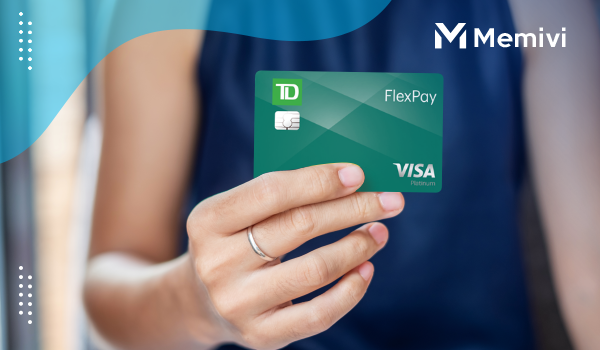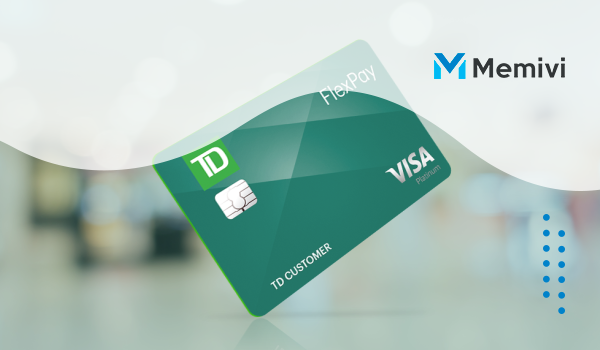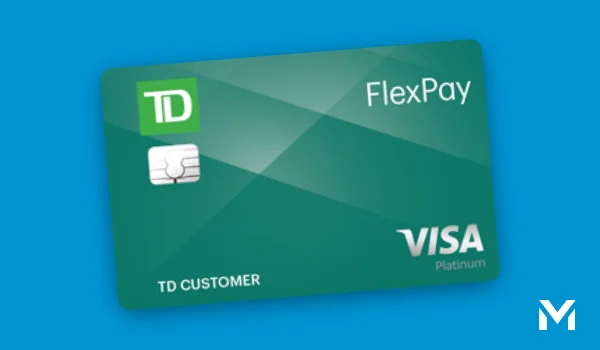
Step-by-Step Guide: How to Maximize the TD FlexPay Card
The TD FlexPay card isn’t about rewards — it’s about relief. If you’re carrying credit card balances at 18%, 22%, or even 28%, this card is a tool to turn that around. Here’s how to get the most out of it:
- Transfer your highest-interest balances first: Focus on cards charging 20% APR or more. Start with your largest balance — the bigger the APR, the greater the savings.
- Complete transfers within the first 60 days: The 0% APR offer on balance transfers only applies to transactions made in the first 60 days. After that, standard interest rates apply — so move quickly.
- Make a payoff plan: Divide your total transferred balance by 18 months to determine the monthly amount needed to eliminate it without interest. For example, a $5,400 transfer = $300/month.
- Set payment reminders: Missing a payment can trigger penalty APRs or cancel the intro period altogether. Set autopay or reminders to stay consistent.
- Avoid new purchases: Since the 0% intro APR does not apply to purchases, use the card strictly for balance repayment until your debt is under control.
- Pay more than the minimum: The minimum payment might keep you in good standing, but only aggressive repayment helps you avoid interest post-intro period.
Little-Known Tips That Save Big
- Balance transfer strategy
If your current cards offer rewards but charge interest, consider using FlexPay as a “holding card” to lower your balance while continuing to use others strategically. - Stack with budgeting apps
Link the card to budgeting tools like Mint or YNAB to track payments and measure progress — motivation matters. - Use the late fee forgiveness wisely
Everyone slips. If you forget a payment once in a year, TD Bank will refund that fee automatically — but don’t rely on it. - Keep utilization under 30%
Even if your balance transfer maxes out the card temporarily, aim to reduce it below 30% of your limit within a few months to protect your credit score. - Pair with a rewards card for future use
Once your debt is paid off, use FlexPay as a backup emergency line while shifting everyday purchases to a rewards card.
FAQ: What Users Really Ask

1. Does the TD FlexPay card come with a signup bonus?
No. Unlike rewards cards, this product is focused solely on debt reduction and doesn’t offer upfront bonuses.
2. Is there a 0% APR on purchases?
No — the introductory 0% APR is only for balance transfers. Purchases will immediately begin accruing interest if not paid in full.
3. What’s the balance transfer fee?
You’ll pay either $5 or 3% of the transfer amount, whichever is greater. This is a one-time fee per transfer.
4. How long does the 0% APR last?
It lasts for the first 18 billing cycles on qualifying balance transfers made within 60 days of account opening.
5. Can I transfer balances from another TD Bank card?
No. Balance transfers must come from cards issued by a different bank.
6. What is the minimum credit score required?
TD does not publicly list a score requirement, but applicants with good to excellent credit (670+) are more likely to be approved.
7. Is this card available nationwide?
No. It is only available to residents of specific states including CT, DC, DE, FL, MA, MD, ME, NC, NH, NJ, NY, PA, RI, SC, VA, and VT.
8. Does the card offer cell phone protection?
Yes. If you pay your mobile bill with the card, you may be eligible for cell phone protection against damage or theft (terms apply).
9. Does it offer virtual card numbers?
Currently, TD Bank does not provide virtual card numbers for this product.
10. Can I convert the card later to a rewards version?
Not at this time. FlexPay is designed for debt management and does not offer a rewards-based upgrade path.
Maximizing Value Beyond the Intro Period
- Aggressively pay off the balance
The entire value of the card depends on your ability to clear the transferred debt before the 0% APR period ends. - Use it as a secondary line
Once you’ve cleared the balance, keep the account open to lengthen your average credit age and boost your score. - Don’t use for new purchases unless necessary
Since purchases incur immediate interest, consider a second card with 0% purchase APR or rewards for daily spending. - Track your interest savings
Use calculators to visualize what you’ve saved compared to making minimum payments on a high-APR card. - Monitor your credit utilization
Keeping this card open and at a low balance will positively affect your credit utilization ratio, a major component of your score.
Alternatives and Complementary Cards
If you’re considering alternatives to the TD FlexPay card or looking to complement it with a second product, here are top picks:
- BankAmericard Credit Card: Also offers 0% APR for 18 billing cycles on balance transfers and purchases, ideal for those needing flexibility across both.
- Wells Fargo Reflect Card: Offers 0% intro APR for 21 months, one of the longest available, but requires excellent credit and may lack additional perks.
- Chase Slate Edge: Offers 0% intro APR for 18 months and a path to lower interest over time — good for those working on improving long-term debt habits.
Who Should Choose the TD FlexPay Card?
Best for:
- Individuals with high-interest credit card debt looking to consolidate and eliminate it.
- People who may have slipped up once or twice and need late fee forgiveness as a backup.
- Budget-conscious users focused on long-term stability, not short-term rewards.
Not ideal for:
- Those looking to earn travel or cash back rewards.
- Applicants outside of eligible U.S. states.
- Shoppers planning to finance large purchases immediately.
Ultimately, the TD FlexPay Credit Card is less about flashy perks and more about financial control. If you’re ready to take decisive action on your debt — and stick to a plan — this card is built to give you breathing room and a way out.



 The Destiny Mastercard <p class='sec-title' style='line-height: normal; font-weight: normal;font-size: 16px !important; text-align: left;margin-top: 8px;margin-bottom: 0px !important;'> Rebuild, Refresh, and Rise — A Simple Way to Take Back Your Financial Confidence </p>
The Destiny Mastercard <p class='sec-title' style='line-height: normal; font-weight: normal;font-size: 16px !important; text-align: left;margin-top: 8px;margin-bottom: 0px !important;'> Rebuild, Refresh, and Rise — A Simple Way to Take Back Your Financial Confidence </p>  In-Depth Review: The Chase Sapphire Preferred Card <p class='sec-title' style='line-height: normal; font-weight: normal;font-size: 16px !important; text-align: left;margin-top: 8px;margin-bottom: 0px !important;'> Dive into an in-depth review that reveals everything you need to know about the subject </p>
In-Depth Review: The Chase Sapphire Preferred Card <p class='sec-title' style='line-height: normal; font-weight: normal;font-size: 16px !important; text-align: left;margin-top: 8px;margin-bottom: 0px !important;'> Dive into an in-depth review that reveals everything you need to know about the subject </p>  Pay It Off Fast: Your Guide to Crushing Credit Card Debt <p class='sec-title' style='line-height: normal; font-weight: normal;font-size: 16px !important; text-align: left;margin-top: 8px;margin-bottom: 0px !important;'> Pay It Off Fast is a powerful strategy that many overlook on their journey to financial freedom </p>
Pay It Off Fast: Your Guide to Crushing Credit Card Debt <p class='sec-title' style='line-height: normal; font-weight: normal;font-size: 16px !important; text-align: left;margin-top: 8px;margin-bottom: 0px !important;'> Pay It Off Fast is a powerful strategy that many overlook on their journey to financial freedom </p>